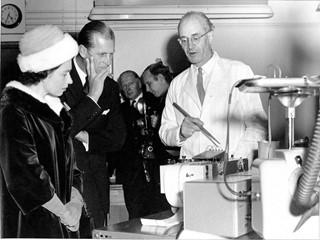History of IPEM

The Institute of Physics and Engineering in Medicine is a hybrid of three organisations formed many years ago: the Hospital Physicists’ Association (1943), the Hospital Physics Technicians' Association (1952) and the Biological Engineering Society (1960).
These organisations have undergone various amalgamations and transformations including name changes, over a period of decades, until the Institute of Physics and Engineering in Medicine was formed in 1997.
Historic contributions to healthcare
Medical physics and biomedical engineering have long been major research strengths for the UK. Many of the healthcare technologies now being used worldwide have their origin in discoveries by British scientists and engineers
IPEM Fellows who have made outstanding contributions to the advancement of medicine over the past 50 years:
Dr Penelope Allisy-Roberts OBE
known for her work in the field of radiation protection. She oversaw significant developments in measuring ionising radiation.
Professor Keith Boddy CBE
a world-leading radiation physics expert and the first to report radioactivity in rainfall following Russian nuclear weapons testing.
Sir Godfrey Hounsfield
an electrical engineer who was awarded the Nobel Prize for developing X-ray computed tomography (CT) scanning.
Professor John Mallard OBE
known for his contribution to several medical imaging techniques, including positron emission tomography (PET), which is used for assessing the spread of cancer, amongst other conditions.
Sir Peter Mansfield
Nobel prize winner played a pivotal role in the development of the medical imaging using magnetic resonance imaging (MRI) and functional MRI.
Professor Steve Webb
helped develop intensity-modulated radiation therapy (IMRT), which delivers radiation more precisely to cancer tumours and spares healthy tissue from unnecessary radiation.
Professor Peter Wells CBE
was awarded the Royal Medal in 2013, also known as the Queen's Medal, for his pioneering work in medical ultrasound. Many of his developments are in diagnostic use today.